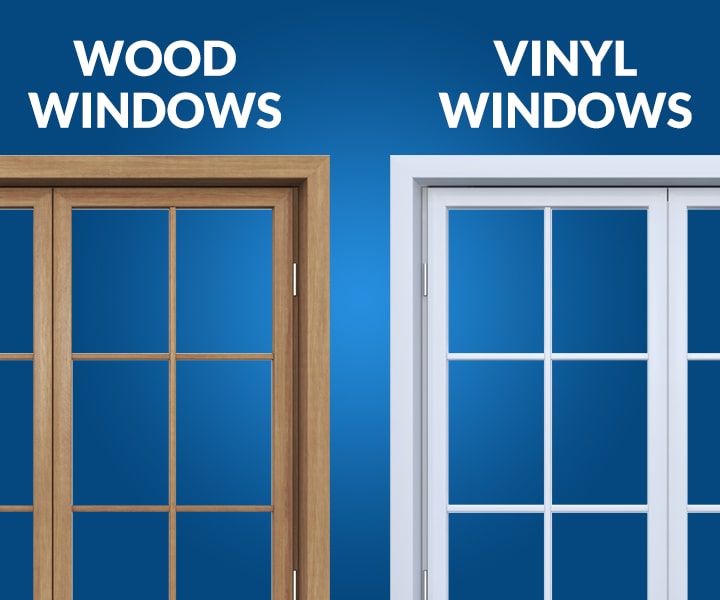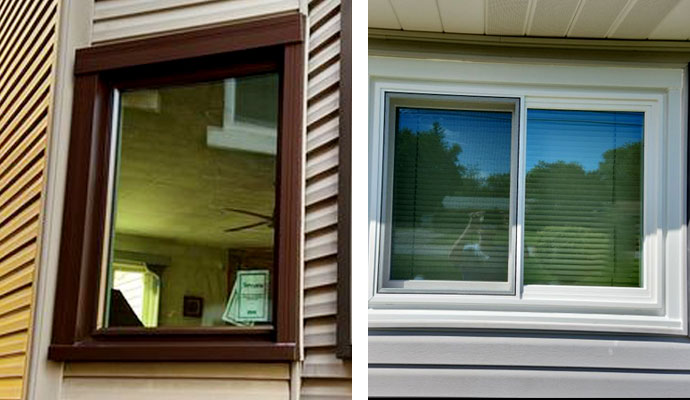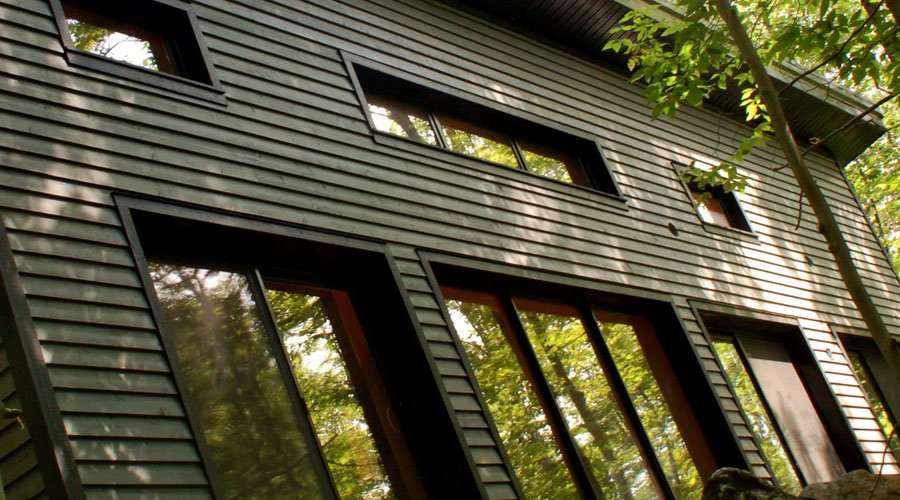Choosing new windows is a big decision—balancing budget, maintenance, aesthetics, and energy savings. Two of the most popular options are vinyl windows vs wood windows. Both have distinct advantages, so let’s break down the key differences to help you decide which material best fits your needs.

Upfront Cost and Long-Term Value
- Vinyl Windows
- Typically 20–30% less expensive than wood.
- Offer strong return on investment through energy savings.
- Often come in bundled “insert” packages that cut installation labor costs.
- Wood Windows
- Higher initial investment—often 50–100% more than vinyl.
- Add intrinsic value and craftsmanship appeal, boosting resale in high-end markets.
- Can last 30+ years when properly maintained, making them a long-term asset.
Bottom Line: If budget is your top concern, vinyl wins. If you’re aiming for luxury curb appeal and long-term home value, wood may pay off.
2. Energy Efficiency and Insulation
- Vinyl
- Multi-chambered frames trap air, providing built-in insulation.
- Pair with double- or triple-pane, Low-E glass and argon gas for U-factors as low as 0.20.
- Excellent at reducing heat transfer in both summer and winter.
- Wood
- Natural insulating properties—wood frame alone insulates better than bare vinyl.
- Often combined with exterior cladding (aluminum or fiberglass) and high-performance glass.
- Competes with vinyl when upgraded glazing packages are selected.
Bottom Line: Both materials can meet ENERGY STAR® standards, but vinyl often offers higher baseline performance at a lower price point.
3. Maintenance and Durability
- Vinyl
- Virtually maintenance-free: no painting, staining, or sealing needed.
- Resists moisture, rot, and insect damage—even in humid climates.
- Color-through formula prevents peeling, though color choices are more limited.
- Wood
- Requires annual or biannual painting or staining to protect against moisture.
- Prone to rot, warping, and insect damage if coatings fail.
- Offers rich, authentic wood grain that can be refinished or repainted for a fresh look.
Bottom Line: Vinyl wins for “set it and forget it” ease. Wood demands ongoing care but rewards with timeless warmth.
4. Aesthetic Flexibility
- Vinyl
- Available in white and limited color options; darker hues can fade over time.
- Some lines offer wood-grain laminates, but closely inspecting samples is crucial.
- Best for clean, modern, or builder-grade styles.
- Wood
- Endless custom paint or stain choices, from classic oak to bold contemporary hues.
- Interior warmth that complements traditional, craftsman, or historic home styles.
- Exterior cladding options (aluminum, copper) allow bold color accents without maintenance.
Bottom Line: For authentic character and color customization, wood remains unmatched. Vinyl covers the basics well but has fewer stylistic flourishes.

5. Environmental Impact
- Vinyl
- Made from PVC, which involves fossil-fuel inputs and can be challenging to recycle.
- Many manufacturers now use recycled vinyl and eco-friendly production methods.
- High energy efficiency offsets some environmental footprint over the product’s lifespan.
- Wood
- A renewable resource—especially when sourced from FSC-certified forests.
- Stores carbon in the frame, helping offset greenhouse gases.
- Exterior cladding and finish coatings can introduce VOCs; choosing low-VOC paints reduces impact.
Bottom Line: Wood has a natural advantage as a renewable material, but modern vinyl lines are closing the gap with recycled content and low-impact manufacturing.
6. Installation Considerations
- Vinyl Inserts
- Slide into existing frames—minimizing exterior repairs.
- Quick, often same-day installations.
- Wood Full-Frame
- Requires removal of old frame and flashing.
- Allows upgrades to insulation, trim profiles, and structural framing。
Bottom Line: Retrofit vinyl inserts save time and money. Full-frame wood installations give you a clean slate for maximum performance and style.
Making Your Choice: Vinyl Windows vs Wood Windows
Go with Vinyl If…
- You need a cost-effective, low-maintenance solution.
- You want high energy efficiency without premium glazing.
- You’re installing multiple windows on a tight budget.
Opt for Wood If…
- You’re renovating a historic or high-end home where character matters.
- You’re willing to invest in regular upkeep for timeless beauty.
- You value eco-credentials tied to renewable materials.

Final Thoughts
There’s no one-size-fits-all answer to vinyl windows vs wood windows. By weighing upfront costs, energy performance, maintenance, aesthetics, and environmental impact, you’ll pinpoint the best fit for your home, lifestyle, and budget. Ready to explore options? Contact certified window specialists to schedule an in-home consultation—then enjoy the perfect blend of comfort, style, and savings for years to come.
